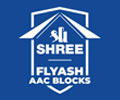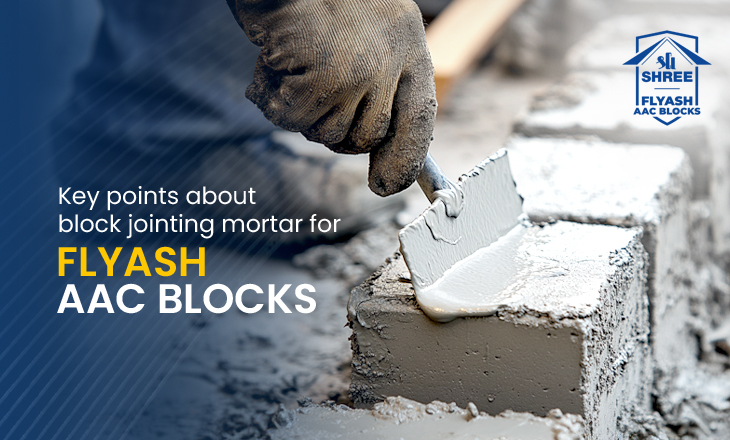Latest construction industry trends include the use of sustainable methods and materials to ensure an environment friendly approach. One such material is Flyash AAC blocks, which can replace red clay bricks. However, with the advent of such material, new bonding solutions have to be developed too to replace basic cement mortar. Block jointing mortar plays an important role in the construction projects where Flyash AAC blocks are used. It is specifically designed to provide a strong and durable bond between two or more Flyash AAC blocks. Here, we share some of the useful insights into block jointing mortar.
1.Block jointing purpose – Block jointing mortar is used to fill the gaps between Flyash AAC blocks during construction. It acts as a bonding agent, providing adhesion and stability to the masonry structure. The mortar creates a uniform layer between blocks, ensuring a solid connection and preventing water seepage, air infiltration, and heat transfer.
2.Block joint composition – Block jointing mortar is typically composed of cement, sand, and specific additives. The cement provides binding properties, while the sand contributes to the mortar’s workability and strength.
3.Water ratio – The water ratio in block jointing mortar should be carefully controlled to achieve the desired consistency and workability. Excessive water can weaken the mortar, affecting its bonding capabilities. Proper mixing of the mortar is essential to ensure a uniform distribution of ingredients and to avoid lumps or inconsistencies.
4. Advantages of block jointing – Block jointing mortar is formulated to create a strong bond between Flyash AAC blocks, enhancing the structural stability of the masonry work. The mortar provides improved crack resistance. It also helps to maintain the thermal insulation properties of Flyash AAC blocks by minimising air gaps and improving the overall energy efficiency of the structure. Also, block jointing mortar with polymer based additives offers water resistance, preventing water penetration and seepage through the joints. The other advantage being that these mortars do not need curing therefore saving on construction time and money.
5.Compatibility – It is important to use block jointing mortar that is specifically formulated and recommended for Flyash AAC blocks. The mortar should be compatible with Flyash AAC blocks to ensure proper bonding and long-term durability. Using the wrong type of mortar may compromise the structural integrity and performance of the masonry work.
6.Quality assurance – To ensure the reliability and performance of block jointing mortar, it is recommended to use mortar from reputable manufacturers. Quality control measures, such as adherence to relevant standards and regular testing, should be implemented to ensure consistent quality and performance of the mortar. Look for block jointing mortars that carry C-1660-09 ASTM standards. This standard is followed globally for thin bed mortars.
Looking for Flyash AAC block jointing mortar ?
Check Shree BLOCKJOIN Polymer . It’s a polymer modified Flyash AAC block jointing mortar that is specifically designed for constructing walls using Shree Flyash AAC Blocks. It does not require any curing. It complies with the C-1660-09 ASTM standards, which are globally recognised for thin bed mortar. With Shree BLOCKJOIN, builders can confidently create strong and durable walls while saving time and effort, thanks to its hassle-free application and superior performance.

